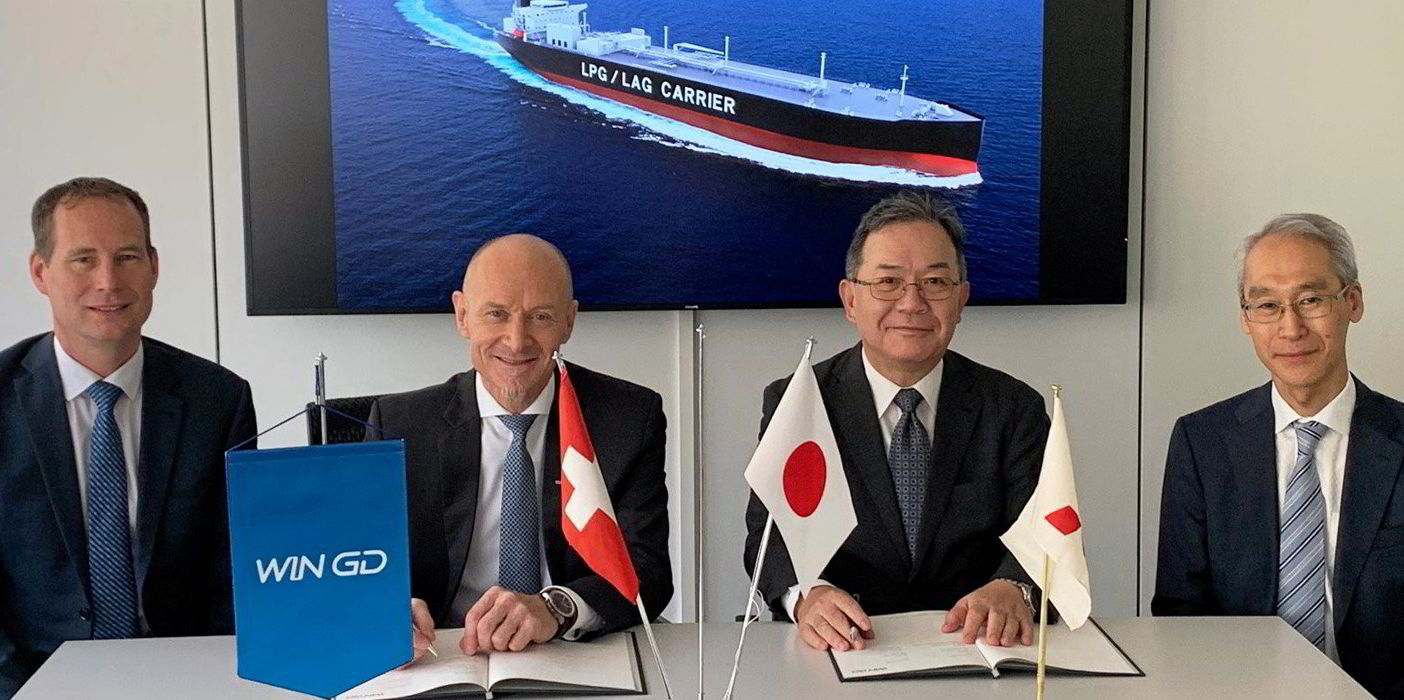China State Shipbuilding Corp (CSSC) is teaming up with Mitsubishi Shipbuilding to crack the development of ammonia as a shipping fuel.
Switzerland-based WinGD, a CSSC subsidiary, has signed a memorandum of understanding to enter into a partnership on ammonia-fuelled vessels with Japan’s Mitsubishi Shipbuilding, with an aim of putting ships into service by 2027.
WinGD will apply its X-DF-A ammonia-fuelled engines to a range of vessel designs. Mitsubishi will design the vessels and complete the fuel chain with its ammonia fuel supply system (AFSS).
The X-DF range of two-stroke engines are LNG and biogas-compatible dual-fuel types, with the DF-A being developed to run on ammonia too. The Otto cycle engines admit gas at low pressure that is ignited by a low volume of liquid pilot fuel.
WinGD has previously said it was looking to bring ammonia into the range by 2025.
Mitsubishi Shipbuilding’s head of marine engineering centre, Manabu Kawakado, said the collaboration will give both groups a first-mover advantage in using ammonia in marine engines.
“It will set the path for the new generation of technology applicable to a wide range of vessels over the next decades,” he said.
WinGD will develop X-DF-A engines at appropriate sizes for the vessel designs, providing Mitsubishi with the specifications for installing the engines and the requirements for all auxiliary fuel systems.
Mitsubishi will design the vessels, set performance parameters for the engines and further develop its AFSS for use with WinGD’s ammonia engines.
WinGD vice president of R&D Dominik Schneiter said the project will allow the partners to make progress in bringing ammonia-fuelled capability to merchant vessels within an established future fuel development time frame.
“It is a timely opportunity to apply X-DF-A engines across a wider range of bore sizes,” he said.
“Our aim is to develop the applicability of these engines and their critical fuel elements across multiple vessel types, while upholding the highest standards for environmental impact and for the safety of the crew on board.”
The project will begin in the third quarter of 2023, and ships could enter service by 2027.





